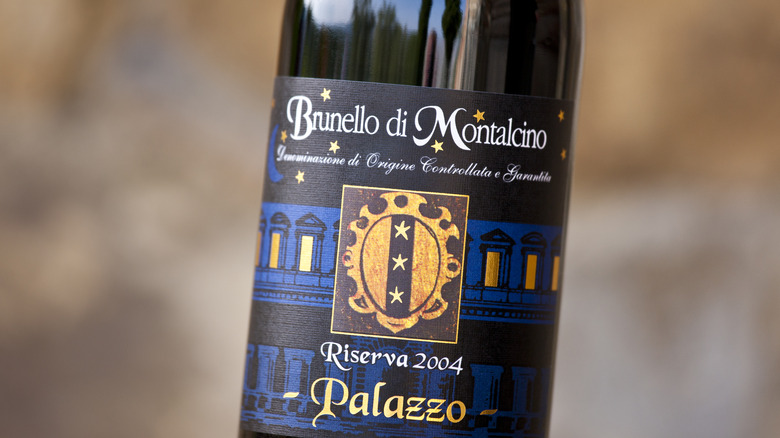Why The Labels On Italian Wines Are So Important
You know the old saying: Never judge a book by its cover? Well, that doesn't apply to wine bottles. The wine bottle has been around a long time — since 6,000 BC, to be exact — although it wasn't made of glass back then, but earthenware jars (via Bordeaux Magazine). We've come a long way since then and now we can buy our wine out of boxes, cans, and traditional and highly preferred glass bottles.
We even have labels that are supposed to give us all the information we need on the glass of wine we'll be enjoying later. There is a small hiccup to that aspect, though. Wine labels look very different depending on what country the wine is produced in.
Depending on whether you are buying your wine from Germany, France, Spain, Italy, or the United States, every country has its own labeling system that wine producers do (or do not) have to adhere to. This can make things a bit more difficult when deciphering your bottle of wine, especially when the label may be written in a different language.
The basics of wine labels
Starting with the basics, when you look at an Italian wine label you should be able to find four things listed: The region the wine was grown in, its classification, the wine's varietal (like Barbarossa, Cortese, or Sangiovese), and the producer's name (via Wine Folly). The region and the wine classification will always be next to each other on the label, often one above the other.
Now, when we talk about classification, what do we mean? If you are familiar with France's Appellation d'Origine Contrôlée (AOC) system you will be able to grasp Italy's Denominazione di Origine Controllata (DOC) easily. Both French and Italian wines are classified by their governments in order to standardize the regions and methods the grapes are grown (via MasterClass).
But Italy's system also involves quality standards, which means that the wine has passed a taste test by the DOC and meets the classification standard. It is a very involved process.
What do Italian classifications mean?
According to Flavours Holidays, there are four Italian classifications. The Vino da Tavola (VdT) are table wines with no specific region and are traditionally lower quality. A step up from those are the Indicazione Geografica Tipica (IGT), which are wines that don't necessarily stick to the rules of production and are non-traditional when it comes to grape varietals used in their blends, but these bottles will often still list a region.
The second highest classified wine is the Denominazione di Origine Controllata (DOC), which means that the wine producers have met Italy's strict rules of authenticity and are of high quality. And finally, the cream of the crop, Denominazione di Origine Controllata e Garantita (DOCG), which is the highest classification given to Italian wines and meets or exceeds all government standards (via Serious Eats).
Based on these classifications, you should be able to easily discern the quality of the wine you are buying.


